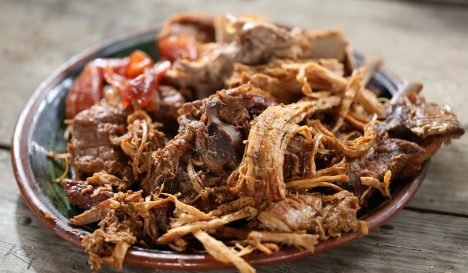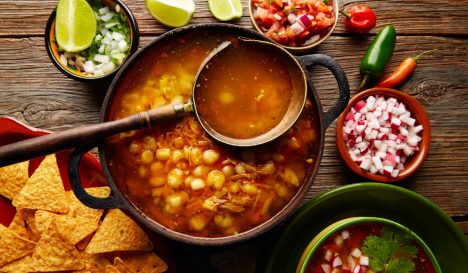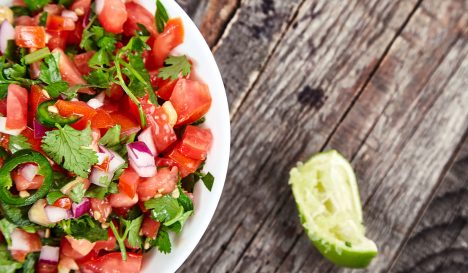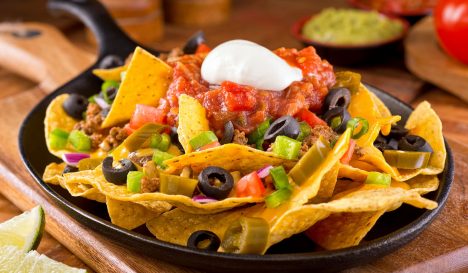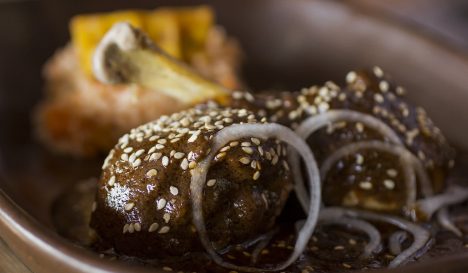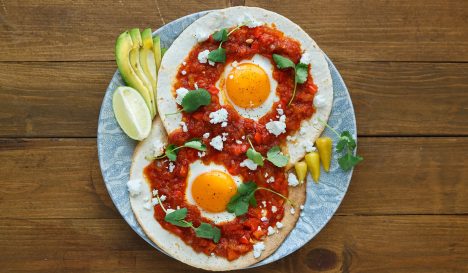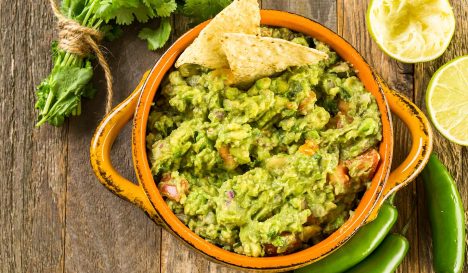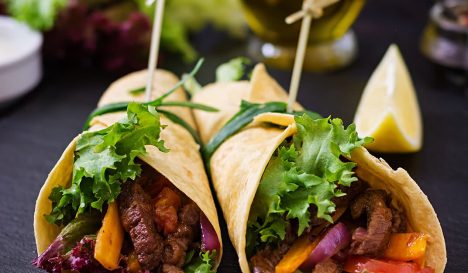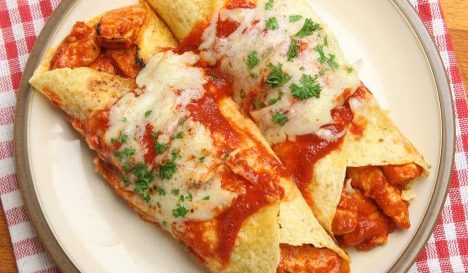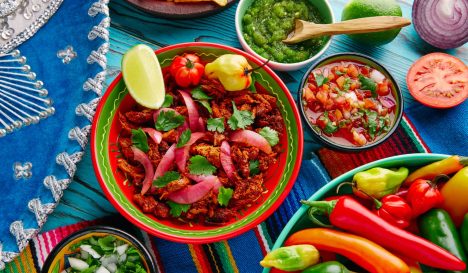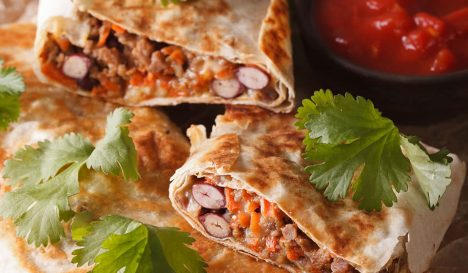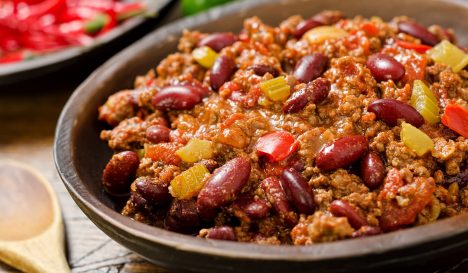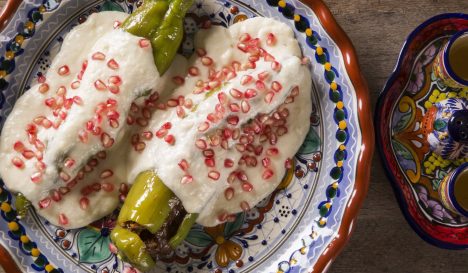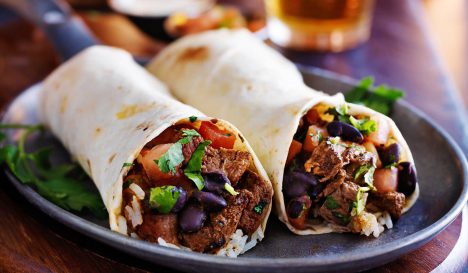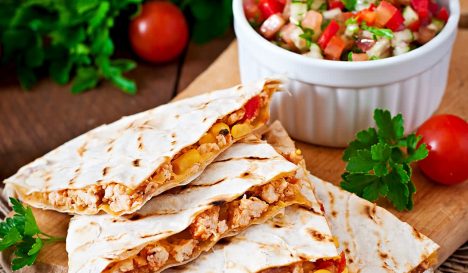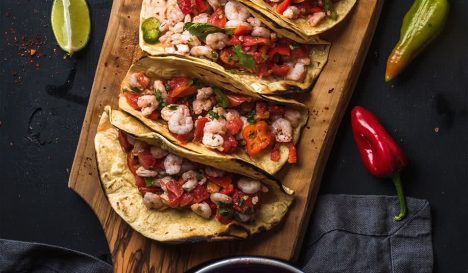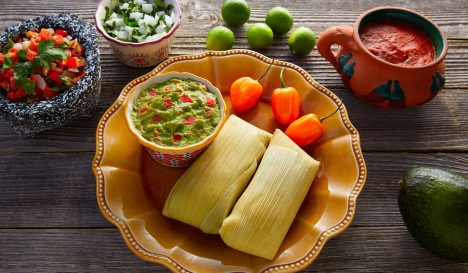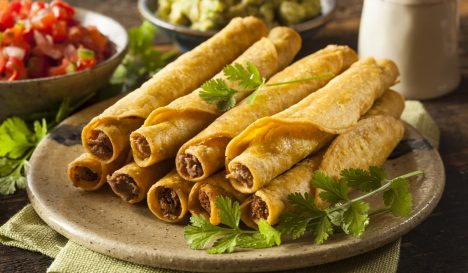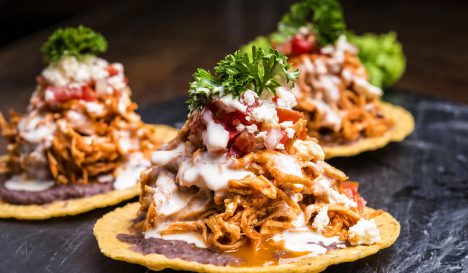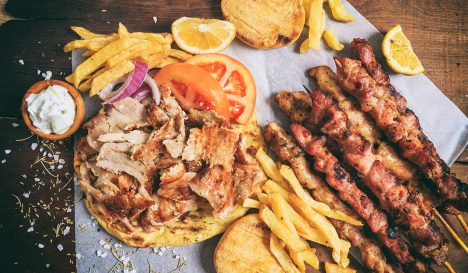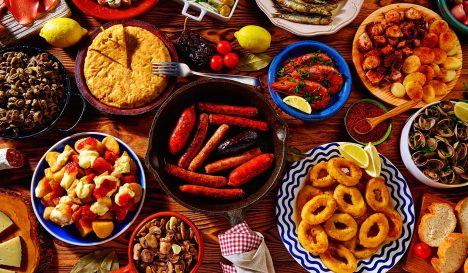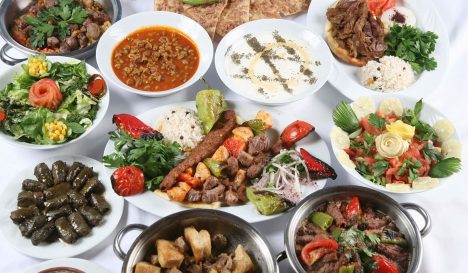Mexican cuisine
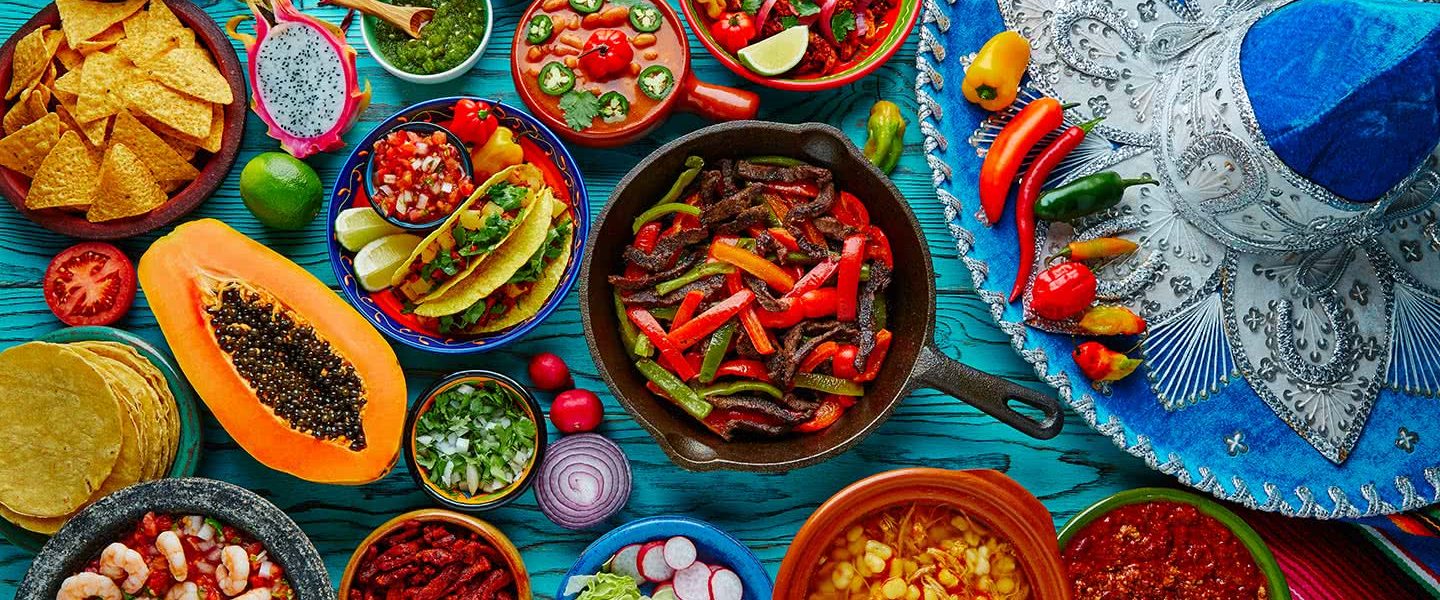
Everything in Mexico in brightly coloured, from the flowers in the tropical jungle in Yucatán to the cheerful blankets woven by the indigenous women on the church square in Oaxaca. This colour splendour extends to the kitchen: bright red salsas are interspersed with green guacamole and golden yellow tacos.
- Not that strange
- Nixtimalization
- Tortillas
- Did you know...?
- Outside influence: Tex-Mex cuisine
- Typical ingredients
- Mexican table manners
- For beginners
- Skip's recommended Mexican Restaurant
- Discover these Mexican dishes
Not that strange
Although the differences between the colourful Mexican plates full of spicy goodness and the plainness of other cuisines seem large, a general love for Mexican cuisine is actually quite understandable. Beans, melted cheese and stews are familiar to the Canadian palate. And just like the average Mexican, Canadians love sauces and spices such as cinnamon and cloves. It’s no wonder Mexican restaurants in Canada have been popular since the 1980s.
Nixtimalization
Authentic Mexican food has a history that goes back centuries; there is evidence that the country has been inhabited since 12000 BC. By the time of the Maya civilization, around the beginning of our era, all the corn crops were grown. Somewhere in the centuries that followed, nixtamalization was discovered. By boiling corn with a base, such as lime or sodium hydroxide, and soaking it for a long time, it was possible to remove the husks around the corn kernels, thus making corn easier to digest. The result? Mexicans received more nutrients and their food tasted better. The effects of a healthy diet are demonstrated by the success of the ancient Central American peoples, such as the Maya and the Aztecs.
Tortillas
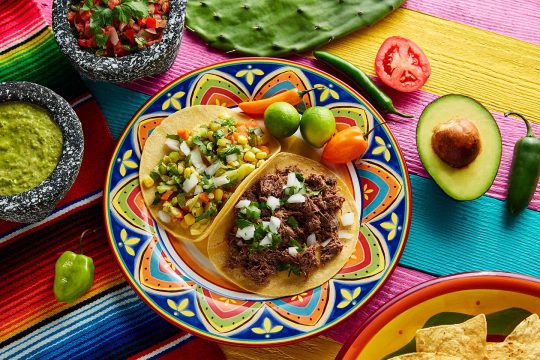
The processed corn kernels form the basis of masa dough. Tortillas are pressed and baked on the comal, a hot plate. Mexican cuisine is unimaginable without corn tortillas: they form the basis for dishes such as enchiladas, tacos and nachos. In addition to corn, other original crops still play an important role in authentic Mexican dishes. Consider tomatoes, chilli peppers, avocados and beans. All in all, it’s clear that Mexican cuisine is one of the oldest cuisines in the world.
Did you know...?
Mexican food became more widely available in Canada after the Mexican Revolution of 1910-1911, when many Mexicans fled to Canada to escape the violence and instability in their own country. During the 1920s and 1930s, a number of Mexican restaurants opened in Canadian cities, and the popularity of Mexican food continued to grow in the following decades. Today, Mexican food is enjoyed by people of all backgrounds in Canada, and it has become one of the most popular cuisines in the country.
Outside influence: Tex-Mex cuisine
In addition to authentic Mexican cuisine, a second candidate is responsible for the dishes that we are served in our Mexican restaurants: Tex-Mex cuisine. This originated in the 1940s in the southwestern states of America. The eating habits of Mexican workers on the ranches there created a unique fusion cuisine, adapted to the tastes and habits of first the Texans and later all Americans. Mexican street food snacks such as tacos and tostadas, eaten in Mexico, were transformed into large meals and served with extras such as bean puree, rice and various sauces. Tex-Mex food is also responsible for popular dishes such as fajitas and chilli con carne.
Typical ingredients
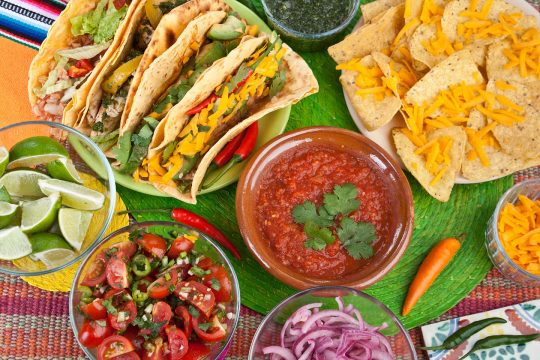
Corn is the number one ingredient in Mexico. Corn or maize is sold everywhere on the street, covered with cream and mayo and sprinkled with lime zest, grated cheese and chilli powder. In the hands of Mexican chefs, corn further turns into masa (corn dough) and masa into the tortilla. In addition to tortillas, pozole is also made from whole corn kernels.
If corn is numero uno, then the chilli pepper is certainly numero dos. Over here, chilli peppers come in only a few varieties: red or green, mild or hot. In Mexico, dozens of variants are used. Dried, smoked and fresh peppers; hot, hotter and super hot variants, with flavours that you could describe as earthy, sweet or grassy. Habanero, Serrano, guajillo, Morita, pasilla, poblano … The Mexicans take their chilli peppers seriously.
Beans are a good addition to all the (nixtamalized) corn in the Mexican diet; together they ensure that you get the right vitamins and minerals.
Warm spices such as cloves, cinnamon, allspice and pepper add flavour to the many stews all over the world. Fresh herbs such as coriander and hoja santa, in combination with lime zest and juice, add a summer freshness that makes the dishes taste even more delicious.
Almost every dish is served with one of many salsas, condiments made with tomato, onion and chilli pepper. Salsas can be raw or cooked, coarsely or finely sliced, thick or thin, mild or hot … Salsas differ from the sauces as we know them in Canada; in Mexico, salsa is a salad, sauce and side dish in one. Pico de gallo, for example, consists of neatly cut pieces of raw vegetables, while salsa roja (red sauce) is pureed, sprinkled and then cooled.
Mexican table manners
Mexicans are generally polite and respectful, especially at the table. Do not be surprised if you are addressed with ‘usted’ the polite form of ‘you’ in Spanish. Table manners are considered important. In addition to general, international rules – no elbows on the table, hands above the table and no playing with your food – Mexicans adhere to the following:
• Wish your table companions ‘buen provecho’ (pronounced; ‘bwen pro-VET-sjo’) before you start eating.
• Have you been invited to someone’s home? Feel free to come half an hour late. Coming too early is rude, being slightly late is the norm.
• Only men can raise a toast.
• Tacos and flautas are eaten by hand.
• Tortillas and salsa are often placed in the centre of the table. Everyone helps themselves.
For beginners
Are you new to Mexican cuisine? With the following menu, you’ll be an expert in no time:
Breakfast
Huevos Rancheros – The Mexican day starts well with this hearty breakfast: fried eggs with sauce served on a tortilla.
Lunch
Fajitas – Mexicans have a large lunch, so opt for a generous portion of tasty meat with all its colourful side dishes.
Dinner
Tamales – Typically Mexican, Tamales are small and airy because you won’t have room for more after such a big lunch.
Snack
Nachos with pico de gallo and guacamole – An ideal snack served with dips and toppings. Keep your portion small, because it is impossible to resist once there is a large bowl in front of you!
Skip's recommended Mexican Restaurant
If you’re ever in Montreal, Skip recommends checking out Tacos Frida located at 4350 Notre Dame St W, Montreal, Quebec. Tacos Frida is known for its authentic, homestyle Mexican food that you won’t find anywhere else in Québéc. “In the beginning, they only cooked the family recipes and didn’t try to make them Québécois and wanted to share their Zapotec and Mayan heritage. But they were afraid that the locals wouldn’t like it, but they did!!,” said Enrique Chan, co-owner of Tacos Frida. Enrique, his brother, Hugo.

